What we want to see in D&D 6e
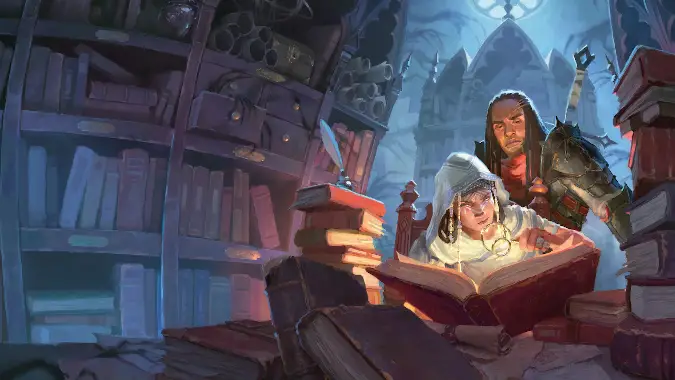
We know that there’s going to be a 50th Anniversary Edition of Dungeons and Dragons, which we’re told will be fully compatible with current 5e products. This makes me think this product will be similar to previous updates to editions, such as D&D 3.5e or the updated 4th Edition Essentials line. That’s pretty cool and all, but it does have me thinking about what D&D‘s sixth edition is going to look like when it inevitably gets here.
Now, there are things I expect, and things I want, and they’re not always the same. So I’m going to talk about both here — what I think we’ll get, what I’d personally like, and how the two sometimes dovetail and sometimes diverge.
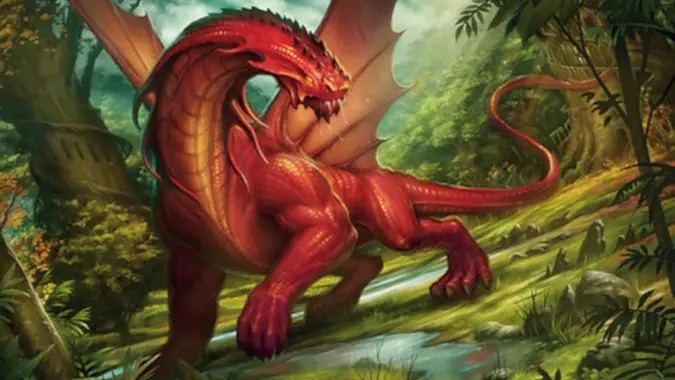
Please change the way Races work, or ditch the whole idea
Things I want to see continue from 5e include the shift away from Race, not only as a mechanic, but as a concept. The approach from Tasha’s Cauldron of Everything is a good harbinger, as are moves to remove the concept of uniformly evil races with efforts to revamp the Drow. It would probably be a good idea to just pull the word ‘race’ entirely when discussing the origin of player characters in D&D — games like Pathfinder have already dropped it in favor of Ancestries and Heritages, and that’s a good direction for 6e to emulate. People are talking about the new 50th Anniversary Edition having over 30 playable Races, and that’s great and all — just don’t call them Races. Orcs, Hobgoblins, Lizardfolk, Eladrins, Warforged — just bring them all in, and let them be any class without having predetermined stat bonuses funnel them away from Bard or Wizard.
I’d also like it if interesting ideas like Lineages became standard in D&D. As they were introduced in Von Richten’s Guide to Ravenloft Lineages work by basically overwriting your Race (I’m going to use that term because it’s the current standard) and you could be a former Dwarf, Elf, Goliath, etc in terms of what you look like, but you treat the Lineage as your actual Race. I think Tieflings, Aasimars, various Genasi, and other Lineages should be used in D&D, and they should be like templates you add to a standard Race, perhaps as a feat you could only take at first level.
The Dhampir and Reborn are really good examples of this kind of thing — you could be a dead, but still moving, member of any group, right?
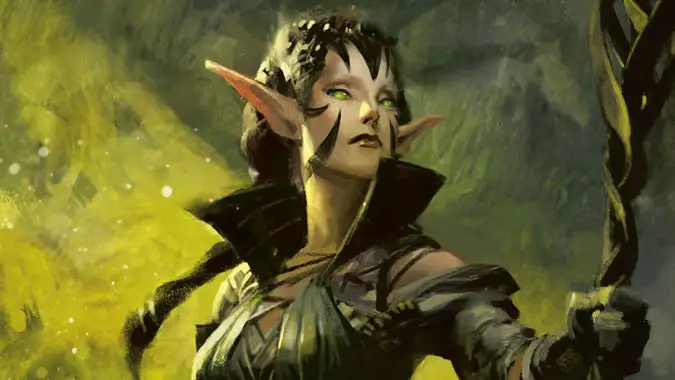
Keep basic mechanics simple, but provide more options
One thing I expect is that the tendency for D&D to try and simplify basic mechanics will continue, and that isn’t a bad thing — standardizing the various to-hit and skill bonuses into Proficiency Bonuses, making them the same per class, and removing iterative attacks were all good decisions. Putting extra attacks on specific martial classes as class features helps add diversity to those classes without making everyone track how many attacks they have, and allows for more balance between spellcasters and weapon-based classes. I expect much of that to be retained or even expanded upon in 6e.
5e has abilities like Cantrips — simple spells that can be used every round — then the level 1 through 9 spells which can usually be cast via spell slots so that the more powerful the caster gets, the more higher level spells they can cast. Frankly, it’s a holdover from older editions, and it was a bit of a rollback when compared to how 4th Edition did it with their At Will, Encounter, and Daily powers. It was much easier to grasp, and while 5e does preserve some of that, I think that would be an excellent idea to revisit.
Also, I’d love it if Feats got bigger again. While I understand why they moved away from Prestige Classes and made Multiclassing less powerful — some classes were seen in 3e as the ‘Feat classes’ that you took a few levels in to hit requirements, so you could multiclass into that Prestige Class, and there was much less of a strong class identity. Nobody really played a Fighter, they just took a level or two so they could get more Feats. But I feel like the pendulum in 5e has swung a little too far away from Feats. It’s hard to justify losing two Ability Score increases to justify some of them. Not all of them, but when everyone takes Polearm Master or Sharpshooter or Lucky, it feels like we need more, better Feats, and more ways to get them.
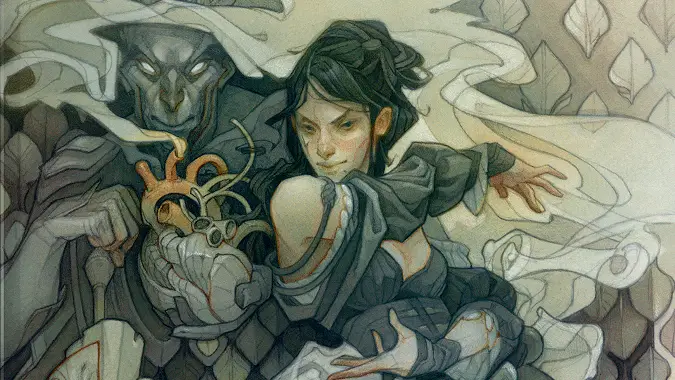
Magic needs an overhaul, and so do classes
In fact, were I on the design team (and I am not, nor ever will be) I’d definitely advocate for finally getting rid of the Vancian magic system in D&D. That was one way that 4e really innovated and it was the one thing I grasped immediately as an improvement when reading the 4th Edition books for the first time. This is absolutely not going to happen, and I understand that, but the idea that Clerics and Wizards have to sit down every day and pick which of their spells they can cast just bugs the heck out of me. A Sorcerer can just know certain spells, can cast a certain number of spells a day, and we’re done. That should be how magic works. Sorcerer and Wizard could just be approaches to magic — these guys harness the occult power of ancient bloodlines, these other guys are just really smart.
Okay, so here comes the most potentially controversial of my ideas for 6e D&D.
There should be a class overhaul, as there usually is in every new edition of the game. I expect there will be one. Like the aforementioned Sorcerer and Wizard. At present, we have one class and a couple of subclasses that use Intelligence as their casting attribute, and four that use Charisma. I get why Charisma is so popular here — it’s essentially the force of your personality — but it feels strange when almost everyone is doing magic via their force of will/personality and one class is just so smart that they understand how to set things on fire and don’t have to have a strong force of will to do it.
Oh, I said one class, but in fact there’s two, because Artificers also use Intelligence. That’s another issue — the Artificer should have been in the PHB to start. It should also, therefore, be in the 50th Anniversary Edition, and whenever we get 6e it should be in there, too. Part of me thinks we should consolidate classes — do we need separate classes for Barbarians, Fighters, Paladins, and Rangers, for example? What about Rogues and Monks — couldn’t they both be different flavors of an agility based damage/utility class? You could make a Paladin by just multiclassing Cleric and Fighter, or a Ranger by mixing Druid and Fighter. You could make a Warlock by crossing Clerics with Rogues, really. Same with Bards, who could be Rogue/Cleric or Rogue/Sorcerer or even Rogue/Wizards. Do we need so many classes? Couldn’t Artificers just be a kind of Wizard?
4e had Strikers, Controllers, Leaders, and Defenders, roles similar to DPS, healer, and tank in an MMO, and at the time I hated it. But now, looking back at it, I wonder if we could actually have a Dungeons and Dragons edition where you didn’t have classes.
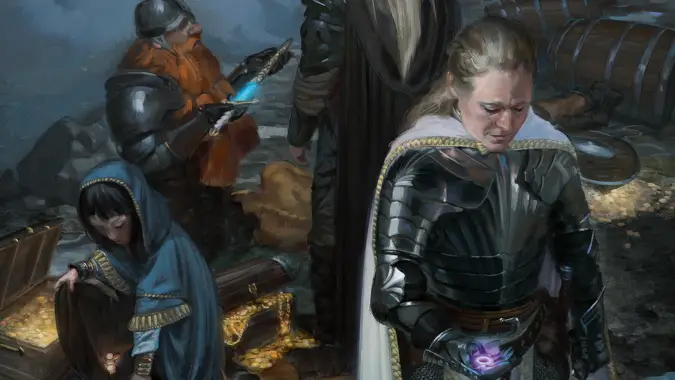
In fact, do we even need classes anymore?
Imagine if you decided you wanted to play something very much like a Barbarian in current D&D. But you could pick between these various roles, and play a Striker who uses ferocity and big 2h weapons to destroy her enemies, or a Leader who rallies their tribe together and motivates them, or a big burly mountain of a man who puts themselves in the line of fire to protect their allies, or even a darting blue painted berserker who can tie up whole groups of enemies with bewildering tactics and distractions, controlling the flow of battle.
I don’t expect this in 6e, and I think part of the problem with it would be that it wouldn’t feel enough like D&D to some folks. That was what happened to 4e, ultimately — a lot of players, myself included, felt like it went too far into being an MMO on paper instead of being the game we remembered, and 5e was hailed at the time of its release for how it brought back things that felt right to long time players. There’s always a need for keeping a balance between innovation and tradition when dealing with one of the oldest and most widely played RPGs on the planet.
So I’ll just say that if we’re going to keep classes at all, my dream class list would be the following:
- Artificer
- Barbarian
- Bard
- Cleric
- Druid
- Fighter
- Paladin
- Psion
- Ranger
- Rogue
- Sorcerer
- Warlord
- Warlock
- Wizard
That’s 14 classes, which feels like plenty to me, and it covers a lot of variety. I’m not sure about leaving Monks off of the list but putting Psions and Warlords on it, but I always felt like the Warlord was the best new class in 4e and I love Psionics in every edition that they exist in. This is, after all, what I’d like to see, not what I expect to see, which is basically the 5e PHB classes plus Artificers.
That’s probably enough musing for one post — gotta leave something for y’all to say in the comments, where you’ll probably point out that you could pretty easily do a Barbarian by adding certain options to Fighters so why keep them just to make me cry.
Please consider supporting our Patreon!
Join the Discussion
Blizzard Watch is a safe space for all readers. By leaving comments on this site you agree to follow our commenting and community guidelines.
 @MatthewWRossi
@MatthewWRossi



